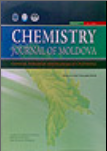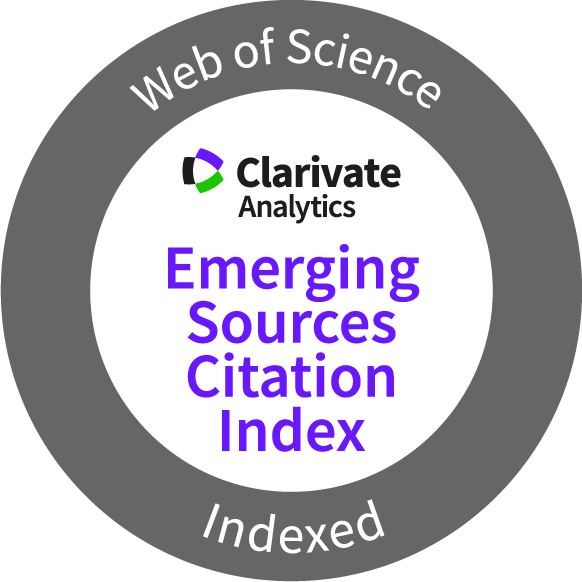Chemistry Journal of Moldova
Research paper
Author(s):
Field: Food chemistry
Type: Research paper
Issue: 2009 Volume 4, no.2
Pages: 50-59
Rodica Sturza, Constantin Sîrghi, Mariana Vrîncean, Susanne Böhme
Field: Food chemistry
Type: Research paper
Issue: 2009 Volume 4, no.2
Pages: 50-59
Full Text (PDF): Download
DOI: dx.doi.org/10.19261/cjm.2009.04(2).11
Graphical Abstract: The study has been focused on the comparative analysis of various analytical techniques for the injection of samples applied to detect the additives with flavouring potential that are used to obtain illicitly the "Muscat" and "Isabela" wines, by implementing the GC/MS method with injection of liquid samples directly into the capillary column, using the "Head-space" method and the solid phase microextraction (SPME).
Downloads: 22
Author(s):
Field: Food chemistry
Type: Research paper
Issue: 2009 Volume 4, no.2
Pages: 44-49
Boris Găină, Rodica Sturza, Violeta Bejan, Constantin Bodean
Field: Food chemistry
Type: Research paper
Issue: 2009 Volume 4, no.2
Pages: 44-49
Full Text (PDF): Download
DOI: dx.doi.org/10.19261/cjm.2009.04(2).12
Graphical Abstract: The basic objective of this work is studying the content of ochratoxin A (OTA) in grapes, grape juice, and wine. This is an analysis of their origin, the conditions of contamination and ways decontamination, toxiconogenes mushrooms, toxicity, world and European regulations. It was estimated the methods of detection of mycotoxins in wine products. It has examined the contents of OTA in the Moldavian juice/wine from different varietals at different stages of winemaking and obtained by different proceeds winemaking.
Downloads: 18
Author(s):
Field: Ecological chemistry
Type: Research paper
Issue: 2009 Volume 4, no.2
Pages: 40-43
Angela G. Cincilei, Svetlana A. Tolocichina, Inna O. Rastimesina, Ion P. Dragalin, Veronica Dumbraveanu, Nina V. Streapan, Vera C. Mamaliga
Field: Ecological chemistry
Type: Research paper
Issue: 2009 Volume 4, no.2
Pages: 40-43
Full Text (PDF): Download
DOI: dx.doi.org/10.19261/cjm.2009.04(2).13
Graphical Abstract: The authors have investigated the biochemical aspects of degradation processes of persistent organic compound benzothiazole by immobilized Rhodococcus rhodochrous cells, such as entrapped in Ca-alginate beads, or as being immobilized on some solid carries. The mineralization of toxicant was complete and biodestructive capacity of entrapped in alginate bacteria increased with each new experimental cycle.
Downloads: 16
Author(s):
Field: Ecological chemistry
Type: Research paper
Issue: 2009 Volume 4, no.2
Pages: 34-39
Olga Covaliova
Field: Ecological chemistry
Type: Research paper
Issue: 2009 Volume 4, no.2
Pages: 34-39
Full Text (PDF): Download
DOI: dx.doi.org/10.19261/cjm.2009.04(2).14
Graphical Abstract: The problem of preventing the heavy metals and other toxic substances release in environment due to the discharges of untreated plating and rinsing solutions is actual from both ecologic and economic point of view. It is crucial to prevent the environmental pollution and uncontrolled losses of resources (metals and other substances). The treatment technologies used today are not always efficient and cost saving and in some cases they
may even provoke the secondary pollution of environment. Electrochemical treatment of industrial waste waters is one of the most promising technologies as it implies the same principles as the main technological processes and does not require introducing of chemicals into the treated solution. However, until now this method was given insufficient attention, although there are certain publications in this field [1].
Downloads: 20
Author(s):
Field: Ecological chemistry
Type: Research paper
Issue: 2009 Volume 4, no.2
Pages: 28-33
Natalia Marchitan
Field: Ecological chemistry
Type: Research paper
Issue: 2009 Volume 4, no.2
Pages: 28-33
Full Text (PDF): Download
DOI: dx.doi.org/10.19261/cjm.2009.04(2).15
Graphical Abstract: The present paper describes the results of reactive extraction of tartaric acid in model systems, which can be used for its separation from secondary wine products. As extractant have been used a normal/isododecyl mixed secondary amine Amberlite LA-2. The following parameters of the separation process have been varied: nature of diluent and modifier; modifier concentration; concentration, temperature and pH of the tartaric acid solution and the stirring time, and the work intervals have been established. It was concluded that in determinated conditions the extent of tartaric acid extraction attains value 85-95%.
Downloads: 41
Author(s):
Field: Analytical chemistry
Type: Research paper
Issue: 2009 Volume 4, no.2
Pages: 24-27
Ludmila Kiriyak, Natalia Cecoi, Tatiana Cazac, Mihail Revenco
Field: Analytical chemistry
Type: Research paper
Issue: 2009 Volume 4, no.2
Pages: 24-27
Full Text (PDF): Download
DOI: dx.doi.org/10.19261/cjm.2009.04(2).16
Graphical Abstract: The polarographic behavior of the complex formed by V(V) and 2,3–dihydroxybenzaldehyde (2,3–DHBA) in the solution containing acetate buffer (pH 5,2) has been investigated. By means of a.c. polarography, chronovoltammetry and other techniques, it has been shown that the electrode process is complicated by the adsorption of 2,3-DHBA and its vanadium complex. The kinetic and adsorption parameters of the electrode process have been determined: adsorption equilibrium constant B= 1,32⋅105 mol-1⋅dm3, the attraction constant γ = 1,2, the maximum surface concentration Гmax = 9,10⋅10-11 mol⋅ cm-2; the share of the electrode surface occupied by one particle of the adsorbed complex S = 1,81 nm2 and the free adsorption energy ΔG = - 39,1 kJ· mol-1.
Downloads: 16
Author(s):
Field: Physical chemistry and chemical physics
Type: Research paper
Issue: 2009 Volume 4, no.1
Pages: 123-128
N. N. Gorinchoy, B. Dobrova, M. Yu. Gorbachev, G. Munteanu, and I. Ya. Ogurtsov
Field: Physical chemistry and chemical physics
Type: Research paper
Issue: 2009 Volume 4, no.1
Pages: 123-128
Full Text (PDF): Download
DOI: dx.doi.org/10.19261/cjm.2009.04(1).01
Graphical Abstract: The present work is devoted to the theoretical study of the activation of the acetylene molecule coordinated in the [Pt(PPh3)2C2H2] complex. By means of DFT calculations it is shown that the geometrical and electronic characteristics of the C2H2 are essentially changed due to its coordination. The subsequent detailed analysis of the molecular orbitals (MO) of the active valence zone of this complex allows one to make important conclusion that this activation is being realized mainly due to the orbital back donation of 5d-electronic density from one of the occupied MOs of the complex [Pt(PPh3)2] to the unoccupied antibonding π*-MO of C2H2.
Downloads: 32
Author(s):
Field: Physical chemistry and chemical physics
Type: Research paper
Issue: 2009 Volume 4, no.1
Pages: 118-122
Alexandru Cecal, Tudor Lupascu, Oana Roxana Hauta, Ioana Gorodea, Mircea Palamaru, Alexandra Raluca Iordan , Ada Macovei
Field: Physical chemistry and chemical physics
Type: Research paper
Issue: 2009 Volume 4, no.1
Pages: 118-122
Full Text (PDF): Download
DOI: dx.doi.org/10.19261/cjm.2009.04(1).02
Graphical Abstract: This paper deals with a study of water splitting by gamma rays in the presence of some double perovskites A2MM’O6 and also Sr2Fe1-xTa1+xO6. The irradiation is performed using 60Co as a source with 3·104 Ci activity and 8.3 kGy/h dose rate, which simulated the radioactive wastes, resulted from reprocessing of spent nuclear fuel elements much more active: 108-109 Ci. The stable products of radiolysis, as well as the other chemical species are measured by mass spectrometry. The calculated radiation yield (GH2) generally decreases in the order: Sr2Fe1-xTa1+xO6 (x=0.5; 0.4; 0.3; 0.1) > Ca2AlTaO6 > Sr2AlTaO6 > Ba2AlTaO6, under the given experimental conditions; the yield was higher in the presence of these catalysts than in their absence.
Downloads: 21
Author(s):
Field: Physical chemistry and chemical physics
Type: Research paper
Issue: 2009 Volume 4, no.1
Pages: 111-117
O. I. Gona, N. V. Stolyarchuk, Yu. L. Zub, and N. A. Yaroshenko
Field: Physical chemistry and chemical physics
Type: Research paper
Issue: 2009 Volume 4, no.1
Pages: 111-117
Full Text (PDF): Download
DOI: dx.doi.org/10.19261/cjm.2009.04(1).03
Graphical Abstract: Mesoporous silicas with the thiourea functional group ≡Si(CH2)3NHC(S)NHC2H5 have been synthesized by monotemplate and bitemplate route (bitemplate is cetylpyridinium chloride as micelle-forming surfactant and monoethanolamide of saturated n-aliphatic acid as non-micelle-forming surfactant). The infl uence of a number of factors on mesoporous silicas structure has been studied: alkoxysilanes and surfactants concentration, and as well as the nature of medium in hydrothermal treatment of mesophases. The optimum conditions under which functionalized mesoporous silicas have possessing highly ordered hexagonal structure have been found. The surface area of mesoporous silicas synthesized using optimum bitemplate solubilization composition reaches 1055-1350 m2/g and sorption volume and pore diameter are 0.75-0.95 cm3/g and 2.5-2.9 nm respectively.
Downloads: 11
Author(s):
Field: Physical chemistry and chemical physics
Type: Research paper
Issue: 2009 Volume 4, no.1
Pages: 103-110
Moisey I. Belinsky
Field: Physical chemistry and chemical physics
Type: Research paper
Issue: 2009 Volume 4, no.1
Pages: 103-110
Full Text (PDF): Download
DOI: dx.doi.org/10.19261/cjm.2009.04(1).04
Graphical Abstract: The inelastic neutron scattering (INS) and EPR transitions are considered for the spin-frustrated V3 and Cu3 nanomagnets. It is shown that the DM exchange and distortions determine the Q-dependence and redistribution of the intensities of the intra- and inter-doublet INS transitions in the 2(S=1/2) states as well as the intensities of the EPR transitions. The peculiarities of the INS and EPR spectra of the V3 ring of V15 quantum molecular magnet and EPR spectra of the V3 and Cu3 nanomagnets are described by the isosceles Heisenberg model with the DM exchange. Spin chirality and spin structure of the Cu3 and V3 nanomagnets with the Dzialoshinsky-Moriya (DM) exchange interaction are analysed in the vector and scalar spin chirality models. The vector chirality model describes the field, orientation and deformation dependence of the spin chirality κn. The spin chirality is formed by the DM interaction and depends on the sign of the DM parameter Gz. The DM exchange and distortions determine the degree of chirality κn<1 in the isosceles clusters.
Downloads: 8






